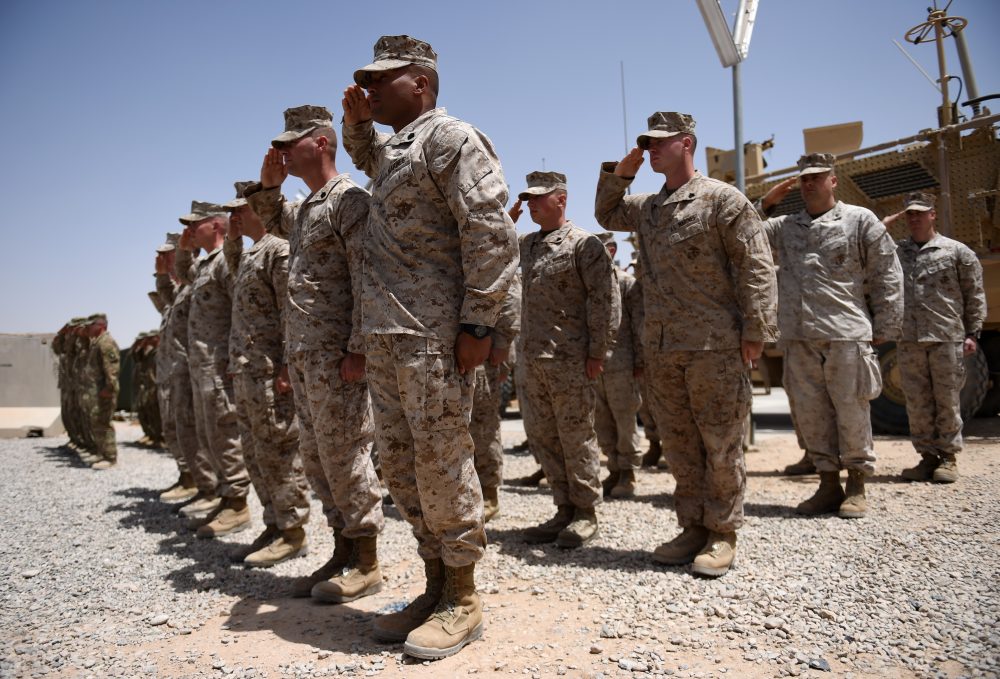Advertisement
Trump Chooses Among '3 Bad Options' In Afghanistan, Former NATO Commander Says
Resume
President Trump has reaffirmed the U.S. commitment to Afghanistan, America's longest war. He outlined a new strategy Monday night that is expected to include the deployment of more American troops, but he did not specify the number. He also said there will be no timetable for the mission.
Here & Now's Robin Young speaks with retired Navy Adm. James Stavridis (@stavridisj), dean of the Fletcher School of Law and Diplomacy at Tufts University, about Afghanistan and also the threat posed by North Korea.
Interview Highlights
On reaction to President Trump's address on Afghanistan
"The president had three bad options in front of him. First of all, he could cut our losses and run after 2,400 dead and $800 billion spent, and we would have ended up with helicopters lifting off the roof of the American Embassy much like we saw at the end of the war in Vietnam. ... And I think you would see the descent to chaos that we saw in Vietnam, and the need for humanitarian withdrawal completely. So, bad option.
"Second option the president had: go back to the big force. When I was NATO commander I had 150,000 troops under my command in Afghanistan. That is an option for which nobody has an appetite. There's enormous Afghan fatigue.
"So you're left with that kinda middle option, which is minimalist. It increases troops by a tiny number, 4,000. We need to press our allies to match that — that'll give us an extra 8,000 — and use the other tools that we have: putting pressure on Pakistan, working to build an Afghan air force. There are tactical things we can do, but it's a bad option, but it's the least-worst option the president was presented with."
On whether Trump's announcement marks a continuation of U.S. policy in Afghanistan
"I've been calling it kinda 'back to the future,' and I feel like we are now roughly where we were back in 2013 as we drew down from the 150,000 troops to the current number, somewhere around 12,000 total, U.S. and allied. So it is very much what we've done in the past. The only two new elements are, first, the idea that this will be conditions-based, not timeline-based. In other words, telling the Afghans and particularly the Taliban we are gonna stay. And then secondly the idea of bringing India into the mix to try and put pressure on Pakistan. That's a fairly new idea. I think those two things will have a small effect, but we're not looking at a game-changer here. But we can at least stay in the game."
On the Afghanistan endgame for the U.S.
"I think the best possible outcome we could achieve would be the following: a democracy, a nation that has minimalist but some control over its borders, keeping the Taliban out of the major population centers and over time, a political, diplomatic solution that brings the Taliban into a conversation about peace in Afghanistan, better than it is now. And the increase of troops at least allows us to move in some measure toward that outcome."
On Trump saying the new Afghanistan strategy goes against his "original instinct"
"At the end of the day, the buck stops with the president of the United States. And he will own this war going forward."
On adopting a more regional approach to North Korea
"What we need to do first of all, before we even get to the regional approach, is spend more time talking to our South Korean allies. They are our best source of information, and I would argue generally our best counselors in how to deal with the North. Then you build out from there, and that means getting Japan, most notably, but also Australia, New Zealand, Malaysia, Vietnam. We need to get this out of a conversation where it is today of the U.S. versus North Korea, and get it into a conversation of the international community and especially the region against North Korea."
This article was originally published on August 22, 2017.
This segment aired on August 22, 2017.